Tonquin Valley Backcountry Hike, Jasper National Park
Where the caribou roam free and the humans wade through horse excrement
My subtitle’s snark may belie the absolutely incredible experience that was backpacking in the Tonquin Valley, but it’s not false. There really is horse shit and mud everywhere, and you really will step into it. But for the undeterred, the Tonquin is pure spectacle. Why is this backcountry loop so special, you might ask? There’s the Ramparts, a stately cluster of jagged peaks on the Continental Divide, framed by a sparkling clear lake set in a lush valley. Then there’s Maccarib Pass, an expansive alpine traverse forming one of two routes into the Tonquin. Finally, the caribou and grizzlies of Jasper National Park call this resplendent wilderness home.
Enough adjectives—a journey to the Tonquin is an adventure that will be remembered for a lifetime.
Day 1: Astoria trailhead to Clitheroe
The trail started flat, high in the valley. The rain came and went, enough to warrant pack covers but thankfully not enough to get us seriously wet. We passed the first campground, Astoria, and then the fork in the road where one path goes to Surprise Point and the other to Clitheroe, our destination for the night.
After hours in the dense forest, we soon arrived at a gigantic boulder field. There were signs warning of falling rocks so we hightailed it across the field, only to find that the trail sloped back toward it. We crossed it from the other side, turned again, crossed it yet again, and on and on; the switchbacks went on for an eternity.
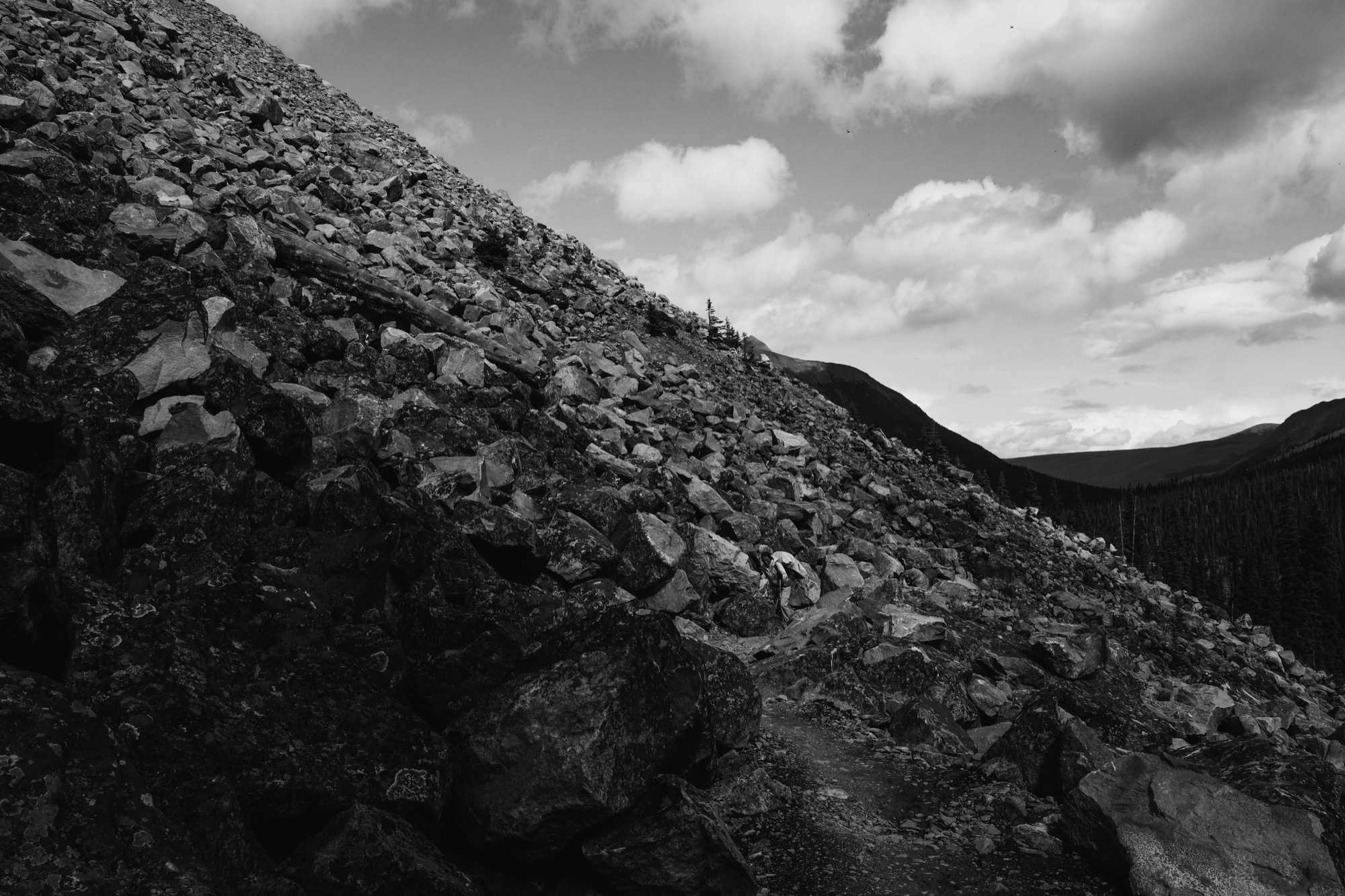
After a gruelling effort that stretched late into the afternoon, we finally arrived at the top and passed the aptly-named Switchback campsite, leaving us “only” 3.5 km of “flat” trail left to walk. As we had gained quite a bit of elevation, the views opened up and in the distance we could see the famous Ramparts, the mountain jewels of the Tonquin Valley, and the Amythest Lakes (which, confusingly, is actually only one lake) at their base. The surrounding alpine landscape was a rewarding sight after being confined within the trees throughout the day.
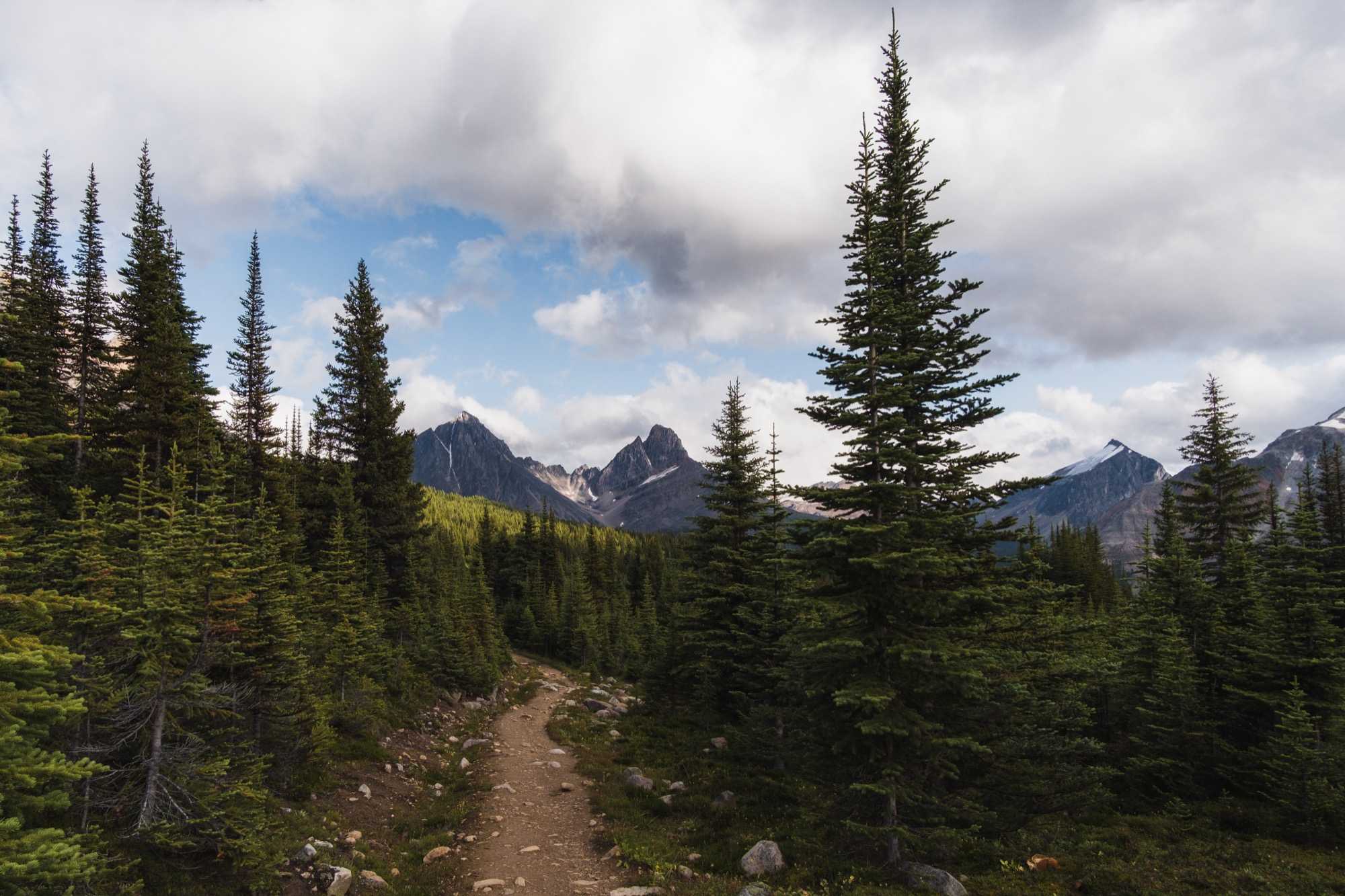
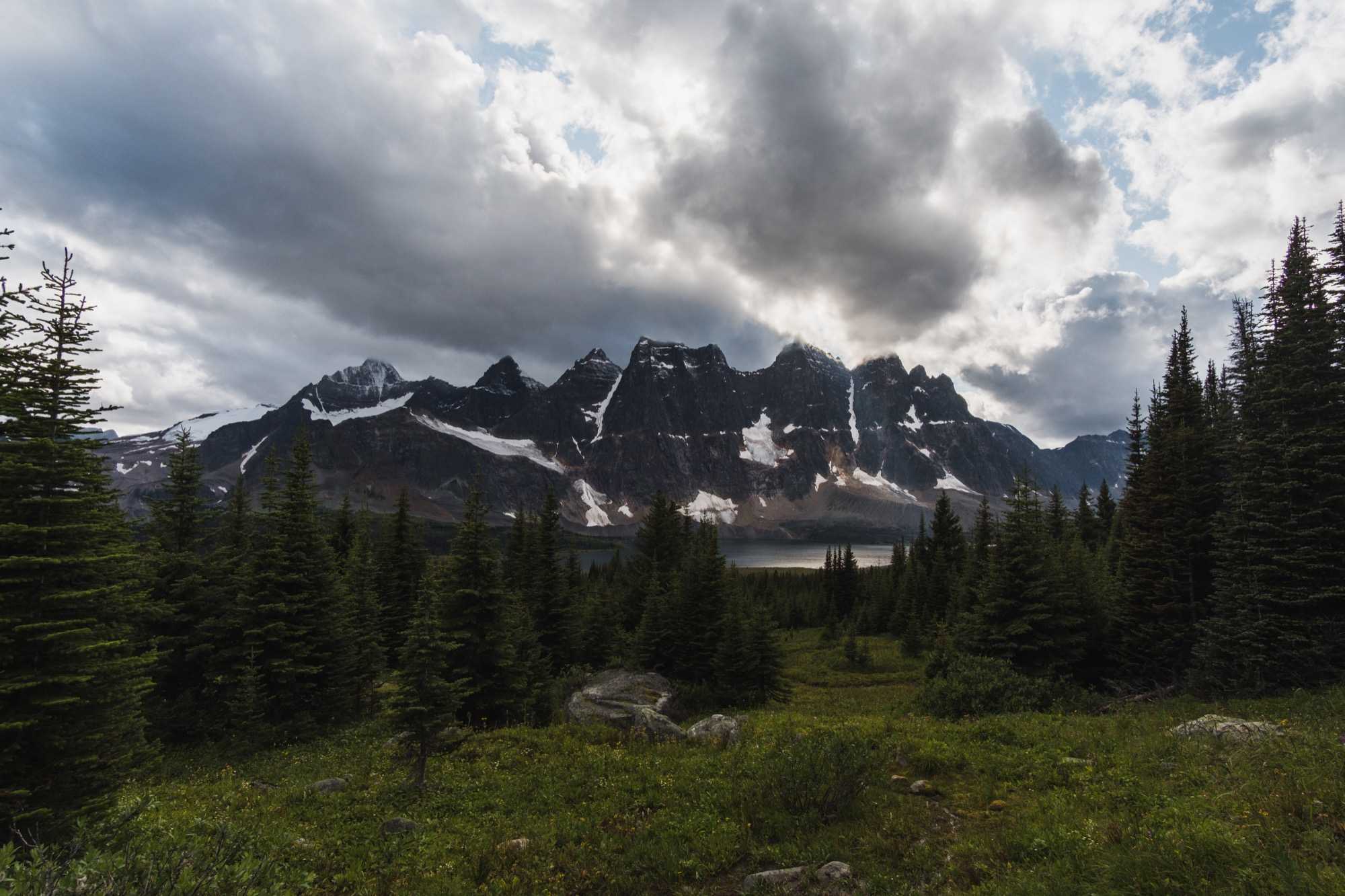
After a 17km effort we arrived at Clitheroe completely exhausted.
Day 2: Clitheroe and Surprise Point
The next day we took it easy. We had booked two nights at Clitheroe in the hopes of going down to Chrome Lake and the Eremite Valley, a day trip that others had recommended (see Practical Tips below). Unfortunately we only made it as far as Surprise Point, but were still rewarded with surprisingly nice views.
Descending into the valley, we were treated to the magnificence of the Ramparts under a sparkling blue sky. The weather in the Rockies is fairly capricious, and we were fortunate to witness the Tonquin at its most spectacular.


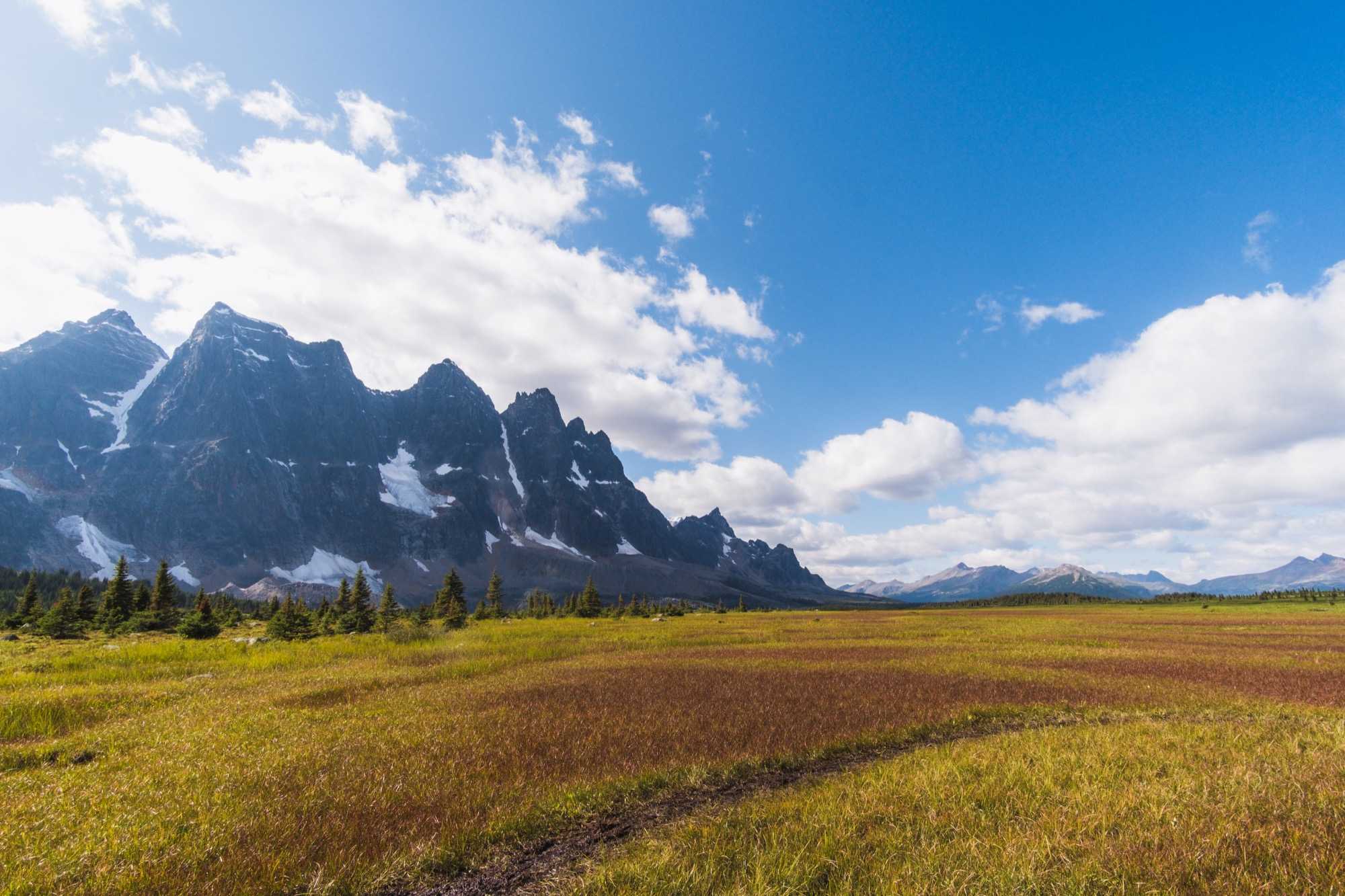
What the pictures may not show is that the trail was incredibly muddy and just straight up wet in sections, and, try as we might, our feet did not stay dry for long. However, that didn’t hamper our enjoyment of the pristine wilderness.
A particular highlight was a footbridge crossing the narrow southern end of Amythest Lakes, leading into Surprise Point. We laid on the sun-soaked wood, recharged with snacks and drank from the crystal clear stream.

Back at the campsite, we met a couple going the opposite direction who had seen a caribou in the valley the day before on the trail to which we were headed. Woodland caribou are threatened in Jasper (and endangered in general), and the Tonquin Valley is home to one of four herds living in the park. Parting ways, the couple passed their luck on to us.
Day 3: Clitheroe to Maccarib
This is what we came for. Clitheroe to Maccarib is a short 6 kilometers, but they’re arguably the most scenic 6 kilometers of the trail. They easily took up our whole day.
The morning was overcast, with dots of blue amidst the clouds that were quickly engulfed. As a result, we witnessed the moodiness of the Tonquin. And how gorgeous it was.
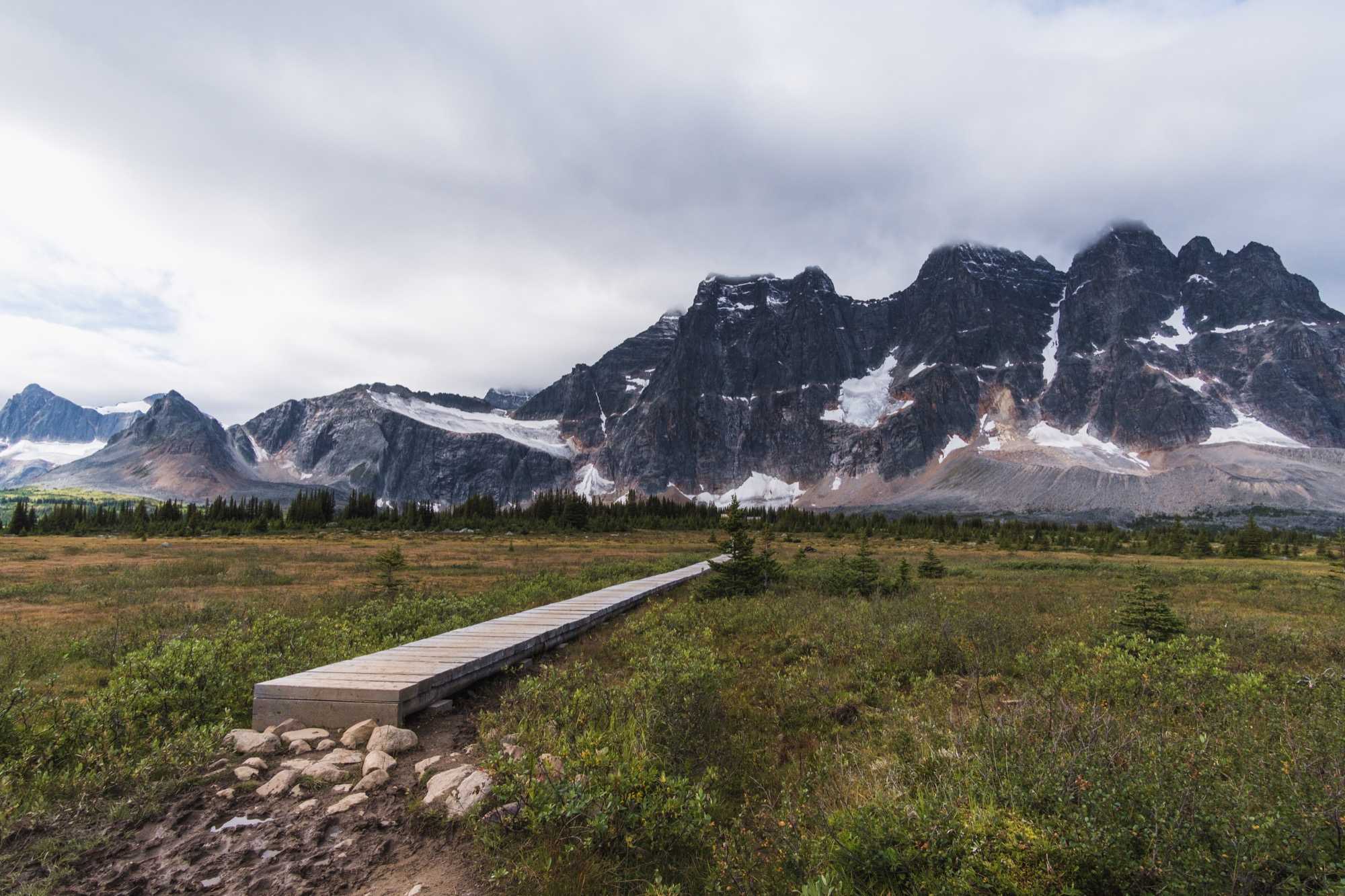
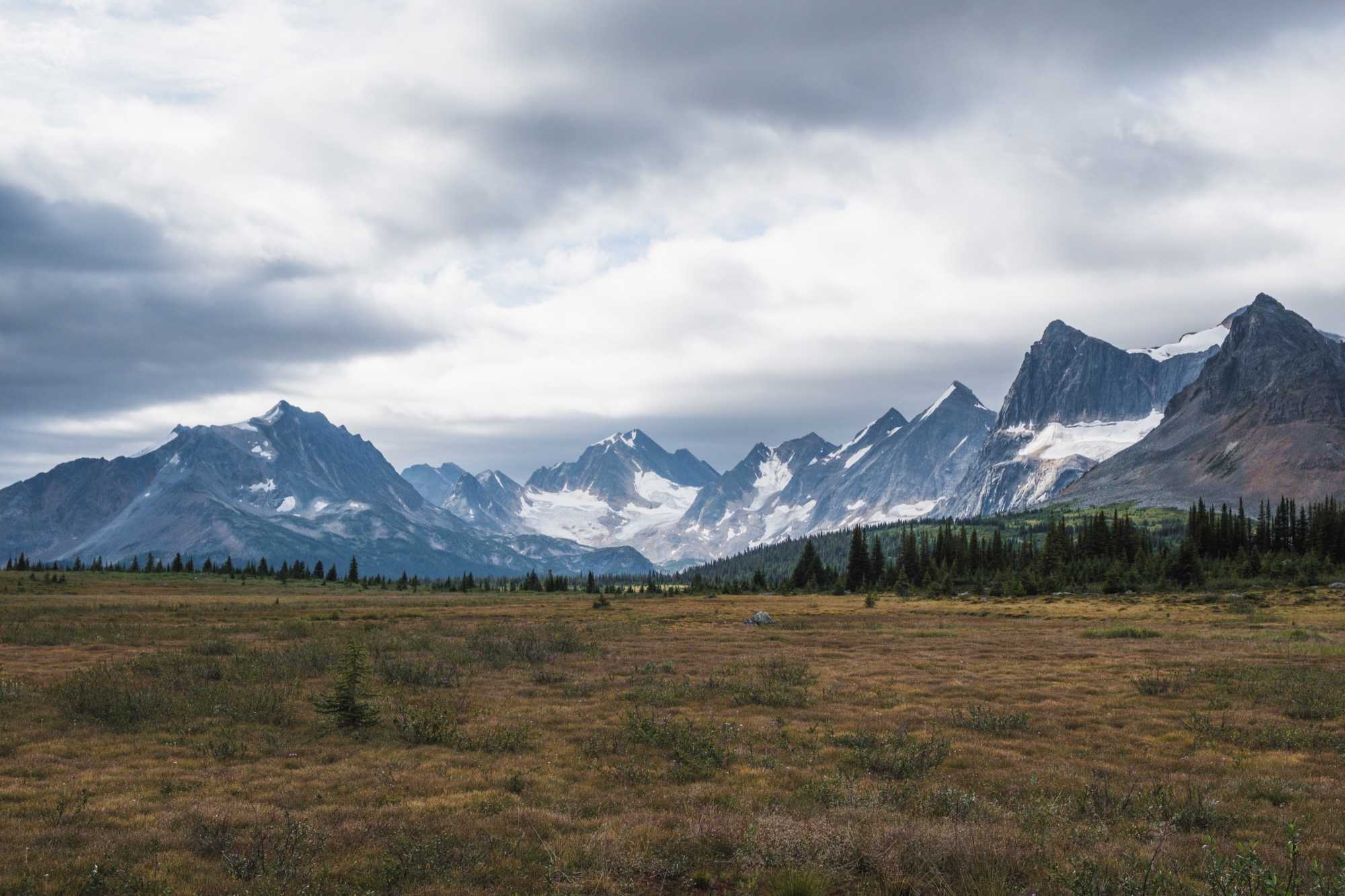
As we approached Amythest, the central campsite, we were stunned that our luck had materialized: we saw one grazing caribou, followed by a dozen individuals. There were even some juveniles, with little stubs for antlers. Unfortunately, I couldn’t get a clearer photo of the herd (or any close-ups—time to buy a zoom lens?), but the third image below is one of my all-time favorites.
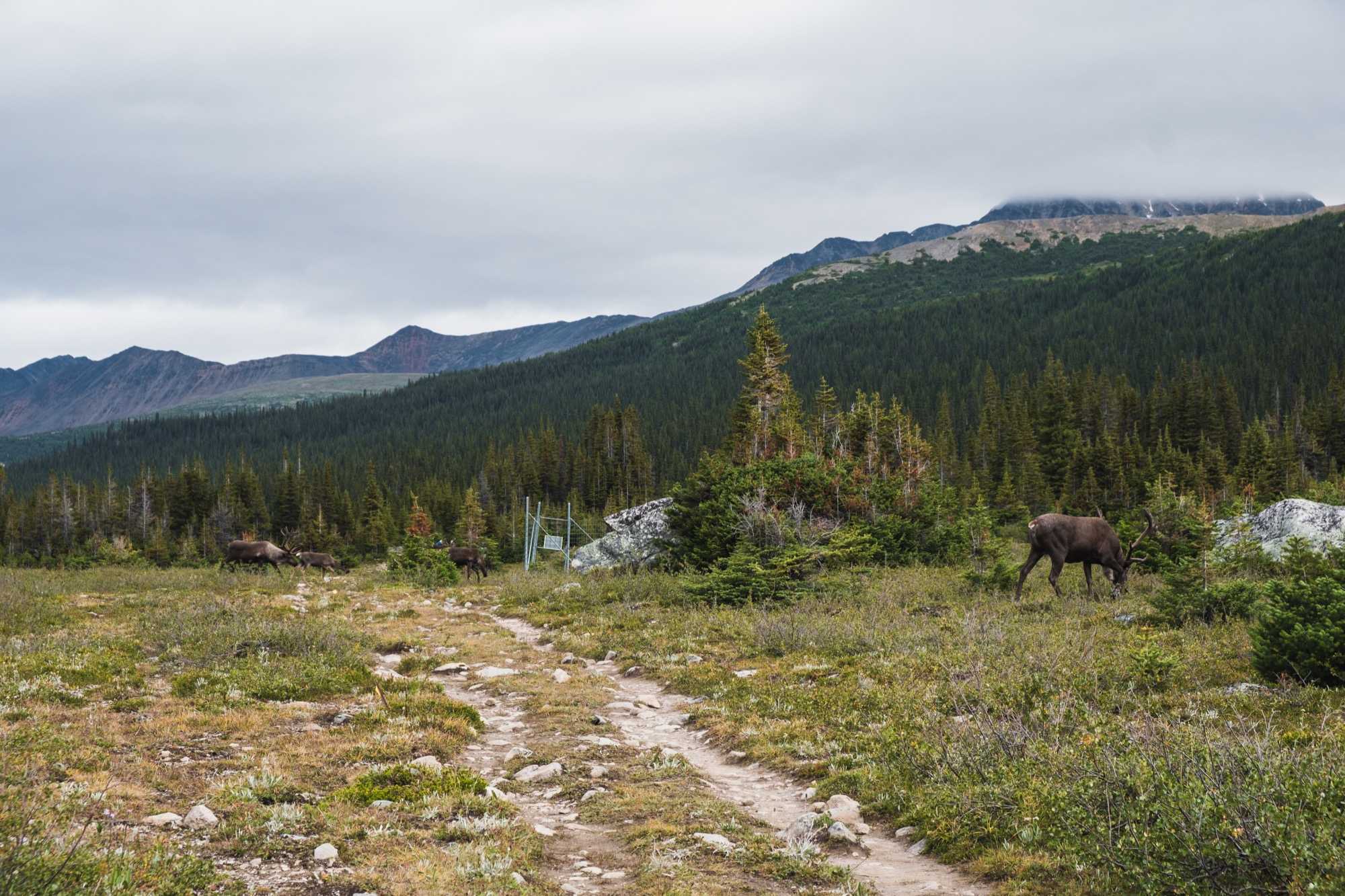
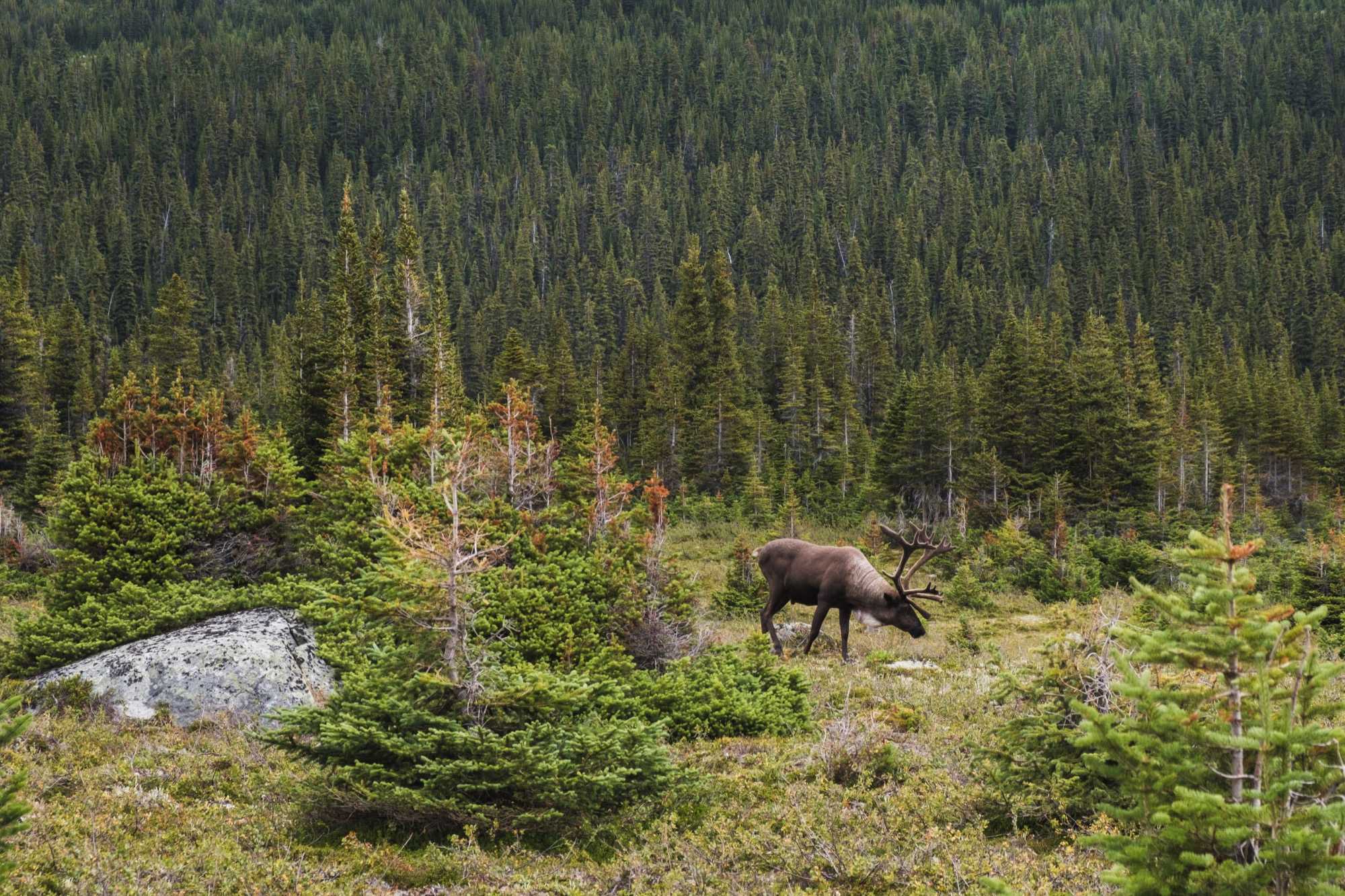

As we left these majestic creatures behind, we felt immensely grateful to have had the opportunity to visit them in their home. Continuing on, we passed by the shore of the Amythest Lakes at the eponymous campground. Though we stood in sunlight, the Ramparts were shrouded in shadow. Apparently, the Rockies like to be dramatic.

Arriving at Maccarib, we set up camp with the Ramparts just barely poking above the trees, and slept contentedly through a night of heavy rain.
Day 4: Maccarib to Portal trailhead
Illuminated by the first break of dawn, the Ramparts greeted us at sunrise.

The last day would prove to be the hardest challenge. 20 kilometers, half of that a slow uphill grind until Maccarib Pass, separated us from our vehicle. After packing quickly and foregoing a proper breakfast, we began a steady climb under a cloudless blue sky. We criss-crossed pristine streams and weaved between trees and bushes.


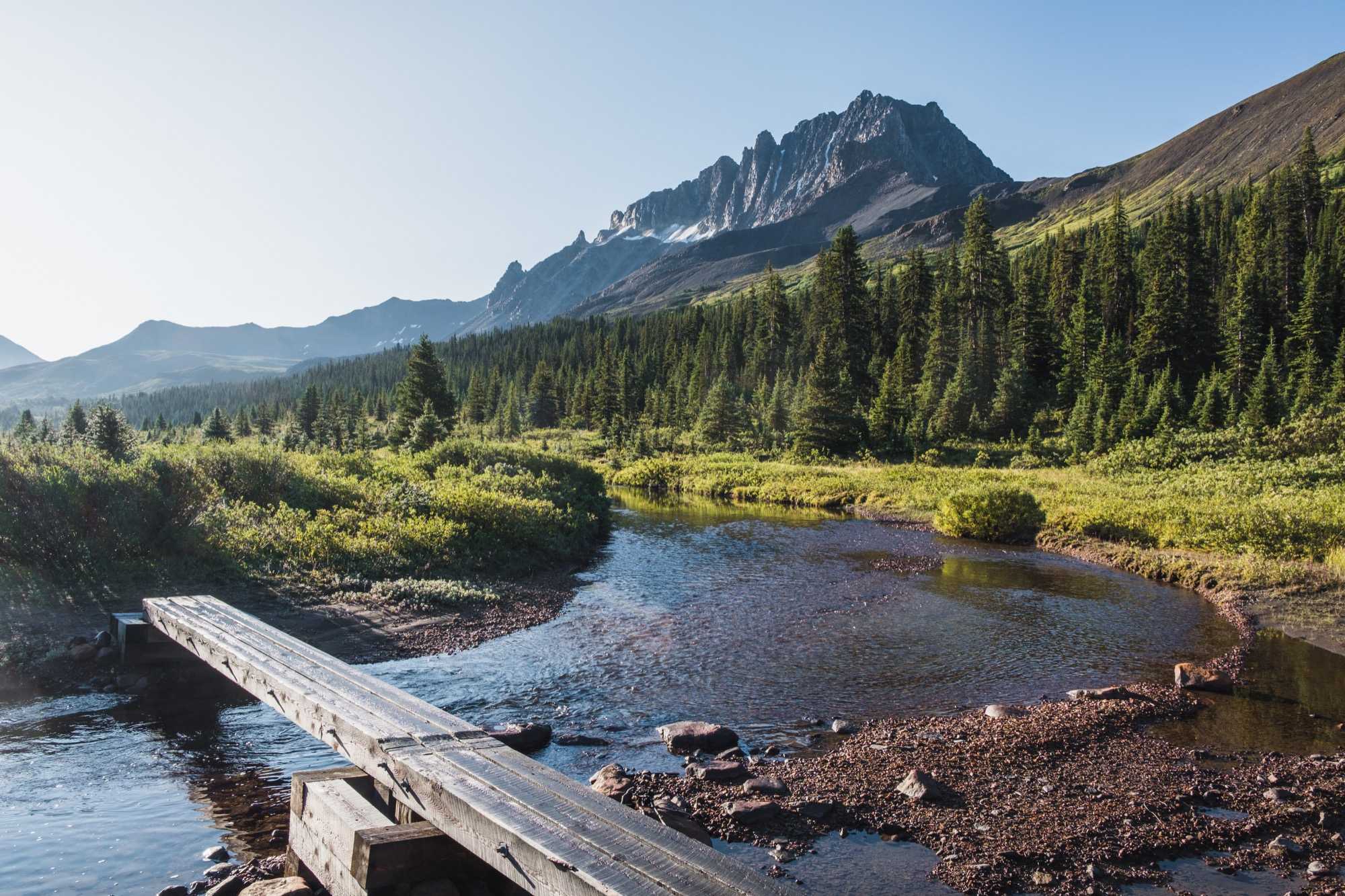
We soon ascended above the treeline, entering an expanse of grass, shrubs, creeks, and marmots. Looking backwards, the Ramparts still watched us from afar, peeking their heads above lesser mountains. But they grew further and further away, and as we turned a few bends, they all but disappeared. We said our goodbyes to these noble giants, whose presence had graced us for three days.

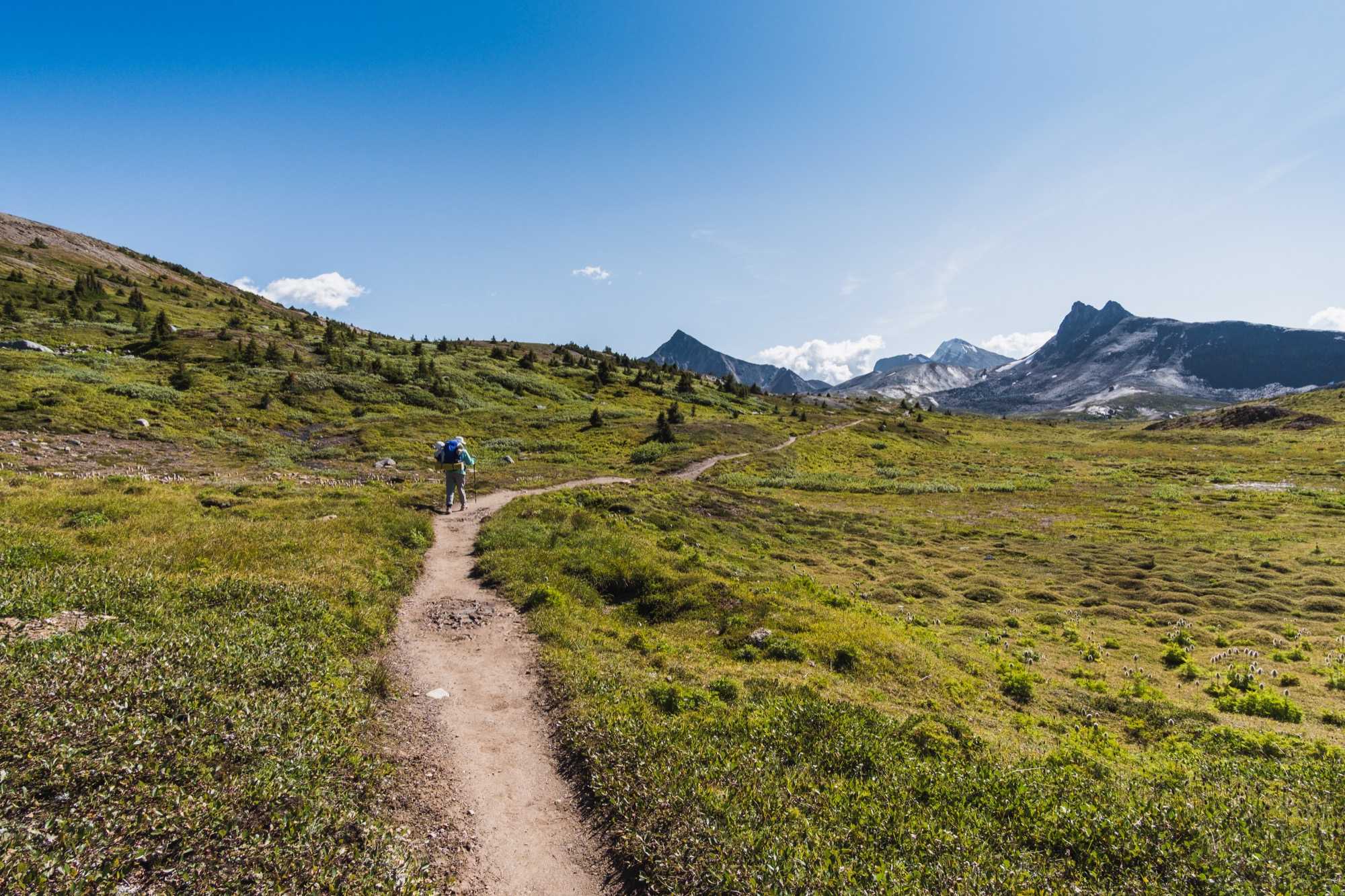



Every detail in this alpine landscape stood out in the harsh light (my pictures, unfortunately, suffered a little). It’s a surreal experience, walking in unspoiled wilderness, feeling strong winds and the blazing sun. It almost makes you forget that you’ve been carrying 30 lbs on your back for a few dozen kilometers.
We returned to the trees as we descended into the Portal Valley. A mostly flat, forested trail following the Portal Creek led our aching knees back out to the parking lot, where our car (and eventually a long, hot shower) awaited us.
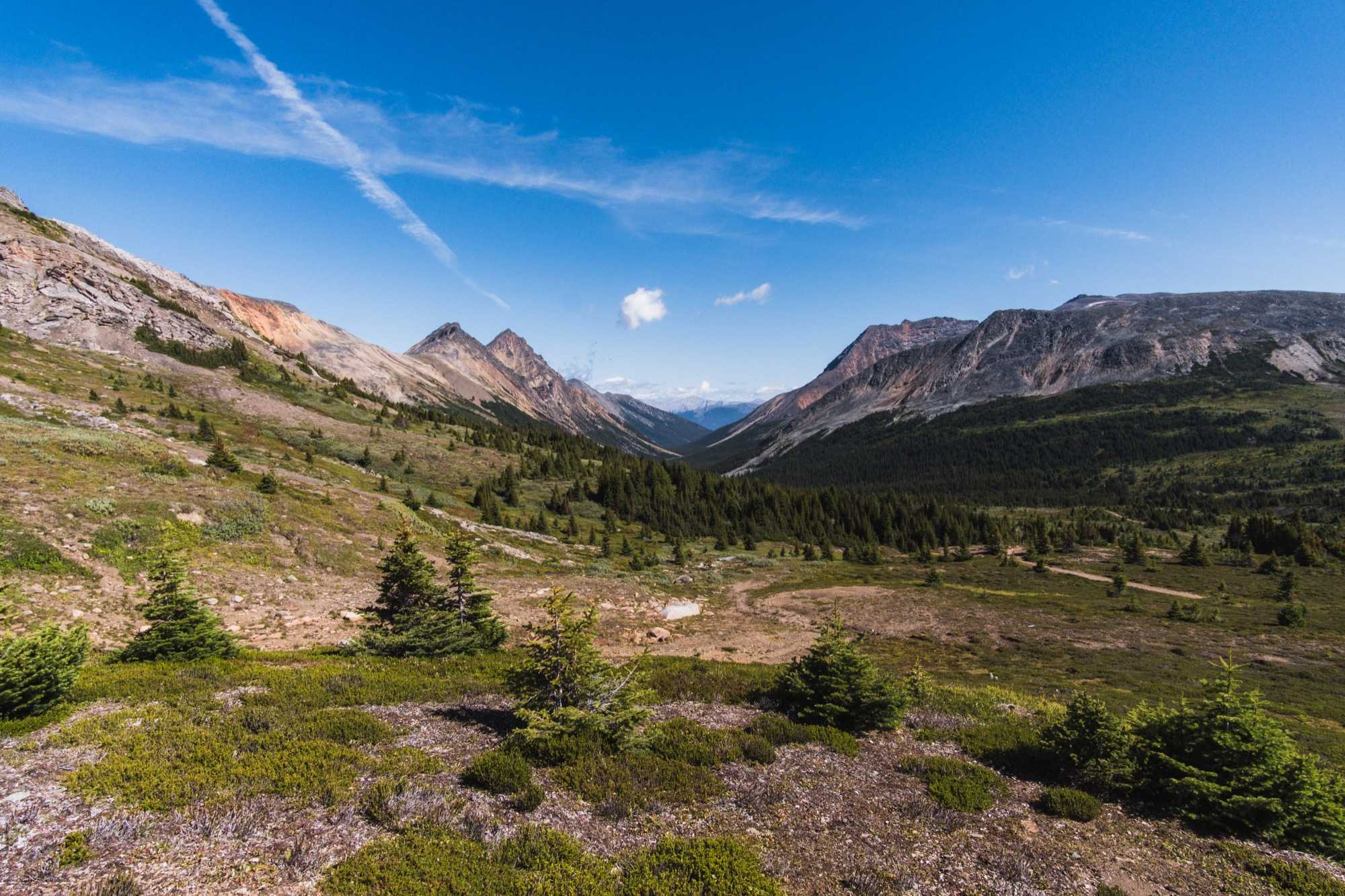
In retrospect, it’s hard to say which day was the best. Aside from the first day, which nonetheless had the novelty that comes with starting a new adventure, each day brought new sights and sensations. I can see why the Tonquin is considered one of the premier hikes in the Rockies—it’s a challenge for sure, but the rewards are overwhelming.
I’m going to conclude with a special picture, one of the only scenic views from the first day, taken after a mere half hour on the trail. This is Mount Edith Cavell, Jasper’s most recognizable peak, standing above a decidedly picturesque alpine lake. Little did we know that as far as the Tonquin was concerned, this was only the beginning.
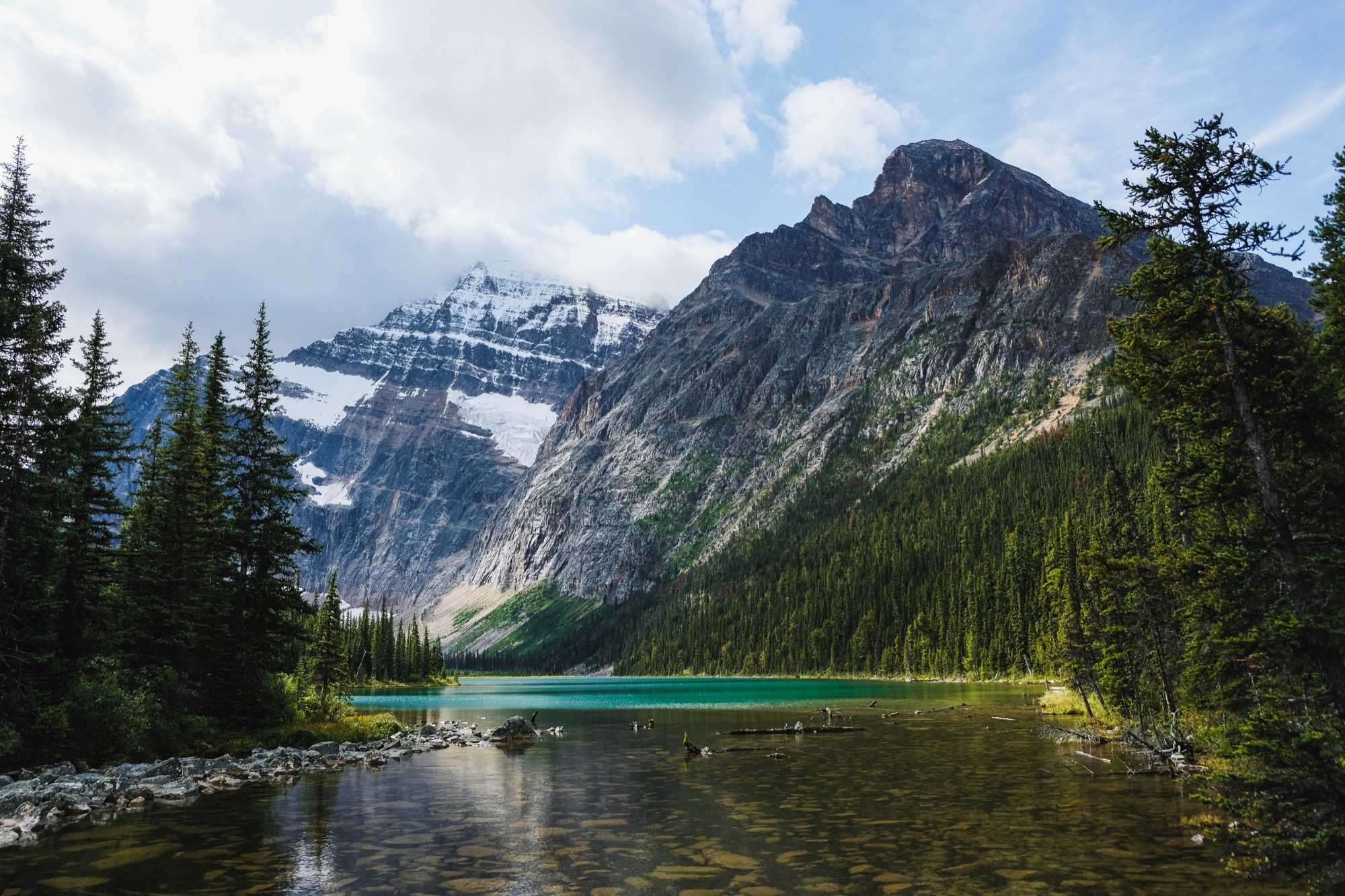
Practical tips
- Didn’t think I had forgotten about the horse dung did you? Although I haven’t mentioned it since the start of this piece (I try to stay positive), it was truly an omnipresent occurrence on the trail. Along with mud. So in short—bring waterproof boots or quick-drying trail runners. (We even saw some people with gaiters. Mad respect.)
- Go in late August or later. Or the mosquitoes might make you cry—no joke, we were told this by a ranger at the Jasper visitor centre when we submitted a trail report. We went the last week of August and barely encountered any insects, but apparently mere weeks before they were unbearable.
- I recommend you hike the full Tonquin horseshoe for two reasons: Surprise Point and Maccarib Pass. Everyone doing the trail will see Amethyst at some point, but if you only do the Portal Creek half, you’ll miss the unique perspective from Surprise Point. If you only do the Astoria half, you’ll miss Maccarib Pass, which would be a highlight of another, less star-studded trail in its own right.
-
If you do hike the full horseshoe you’ll have to park at one trailhead and arrange transportation to the other. Or own two cars.
- Fun cautionary tale: once upon a time, there was a young man who didn’t ask for the price of a taxi before getting in. Upon arriving at the Astoria trailhead, the driver charged him much more than was reasonable. But our protagonist had no choice. They had already arrived. Moral of the story: confirm the fare beforehand!
- Side trips: In a Faraway Land and Ultimate Gear Lists (two excellent travel blogs) have more information on the day trips to Moat Lake and the Eremite Valley (from Surprise Point and Amethyst, respectively).
-
Campsite ratings: although I hope you’ll be able to book the better campsites, they’re usually the first ones to go. If that’s the case, don’t despair—we booked the “B-tier” sites and still had an incredible experience. Note that these ratings are entirely based on scenery but are fairly consistent from blog to blog.
-
A-tier:
- Amethyst: this is the raison d’être, the main attraction of the entire valley. Watching the sun rise or set across the lake must be an incredible experience, one I hope to witness another time!
- Surprise Point: provides a different view of the Ramparts, framed by the southern edge of the Amethyst Lakes.
- Maccarib: high enough in the valley that you can see the Ramparts peeking above the trees while you make dinner or set up camp.
-
B-tier:
- Switchback, Clitheroe, Portal, Astoria
- Note that there are several backcountry huts in the valley, the Tonquin Backcountry Lodge, Tonquin Valley Adventures, and the Alpine Club of Canada-owned Wates-Gibson Hut. They have varying amenities, but should you desire to sleep in a proper bed or take a nice warm shower (or even rely on a horse to carry you on the trail) and have the money to spare, these may be worth looking into.
-
-
Resources:
- In a Faraway Land (highly recommended)
- Parks Canada (includes map)
- Ultimate Gear Lists